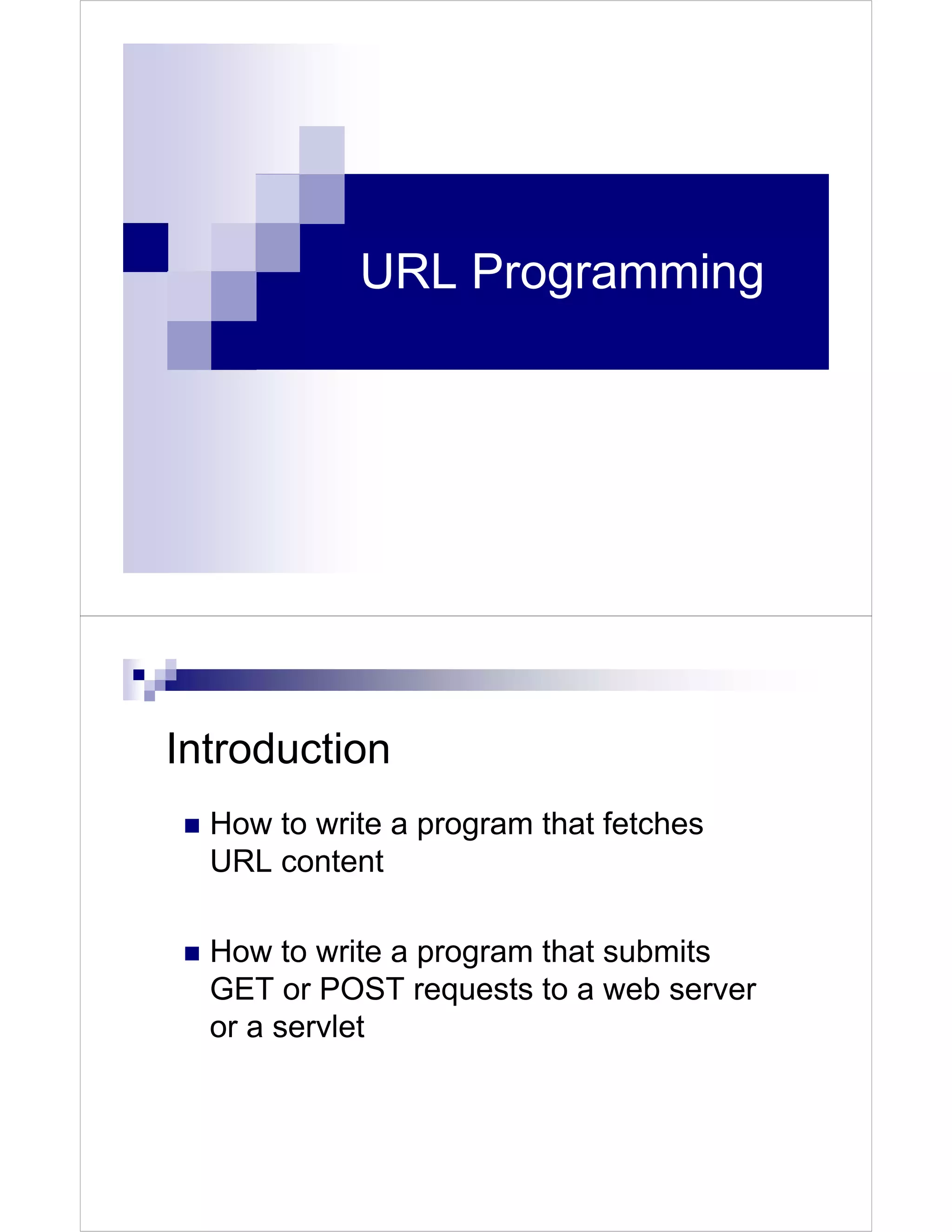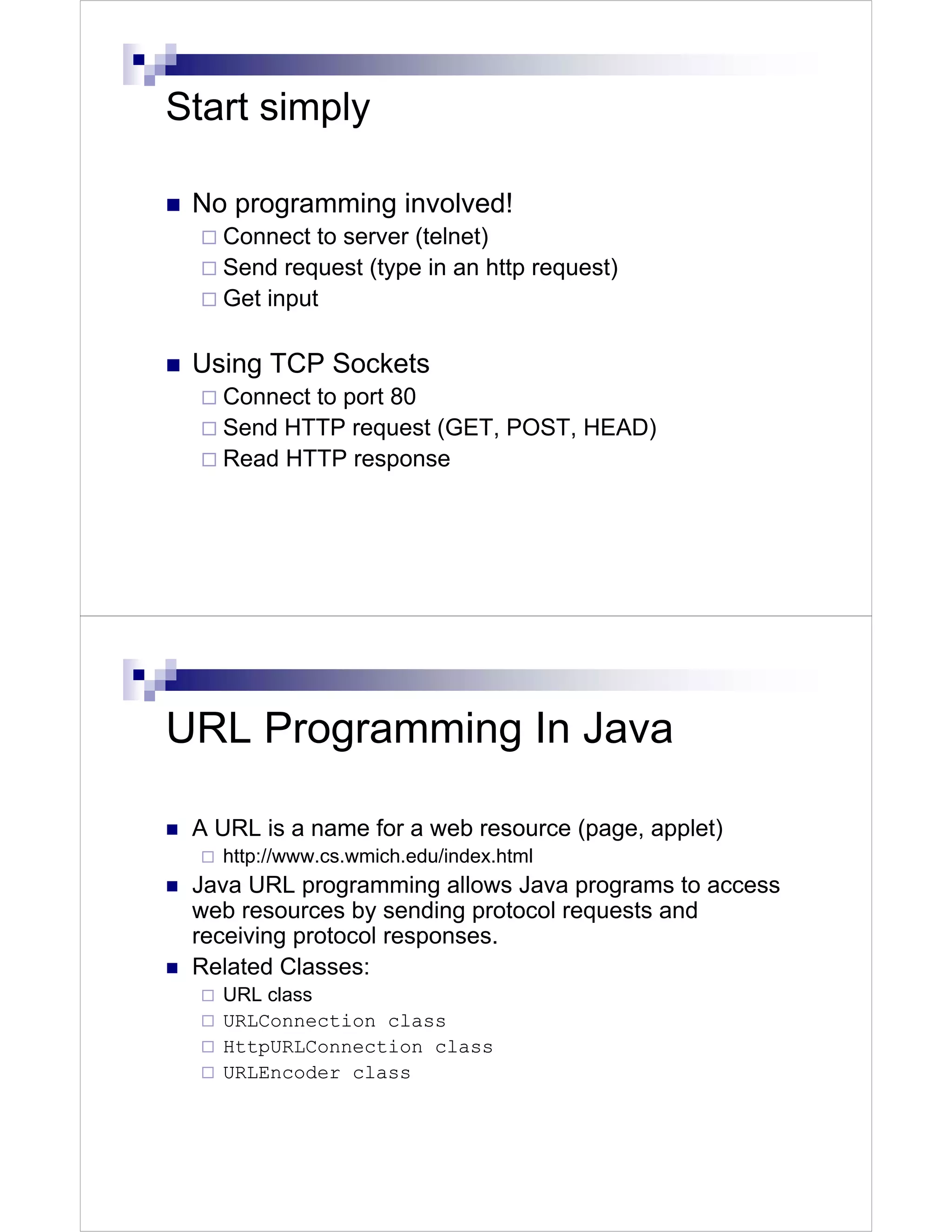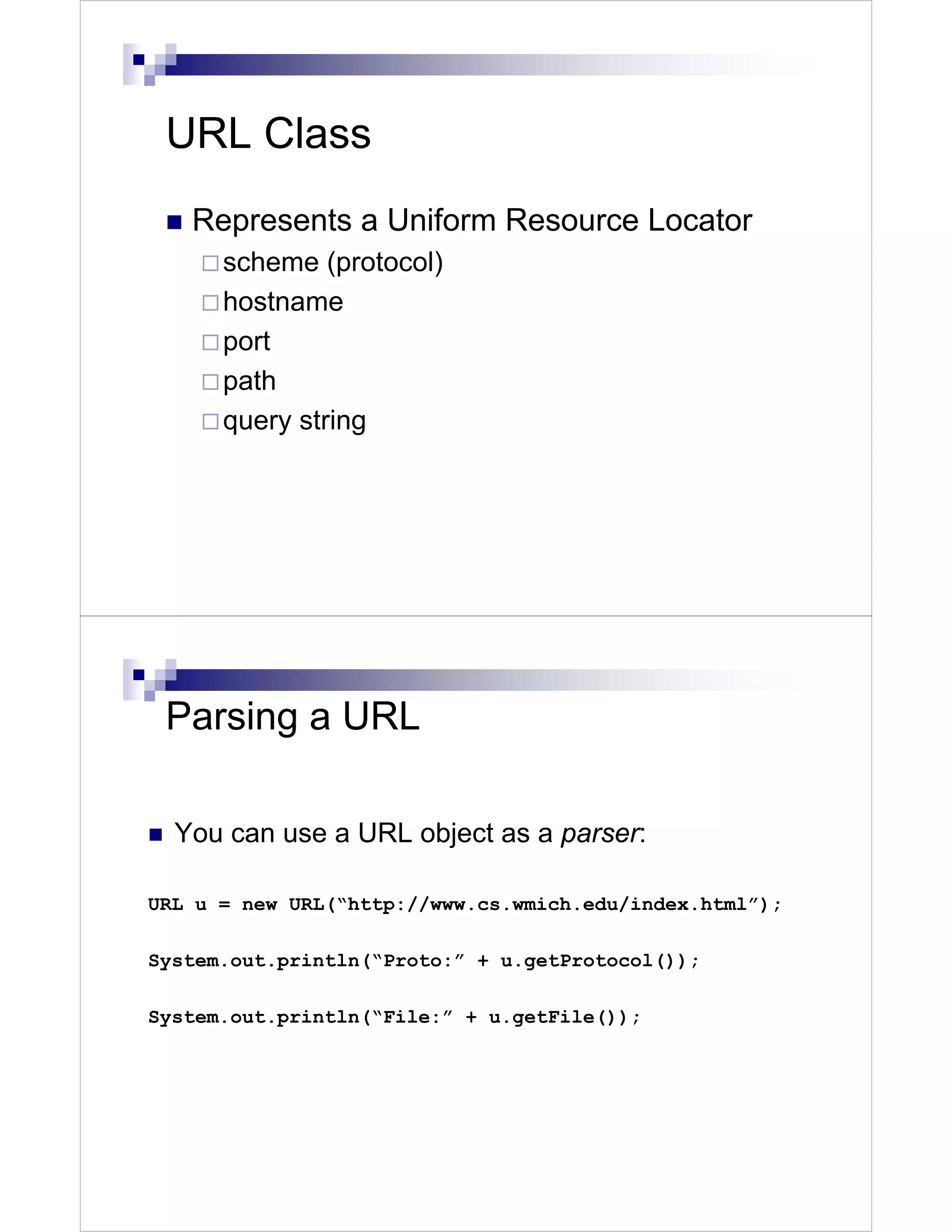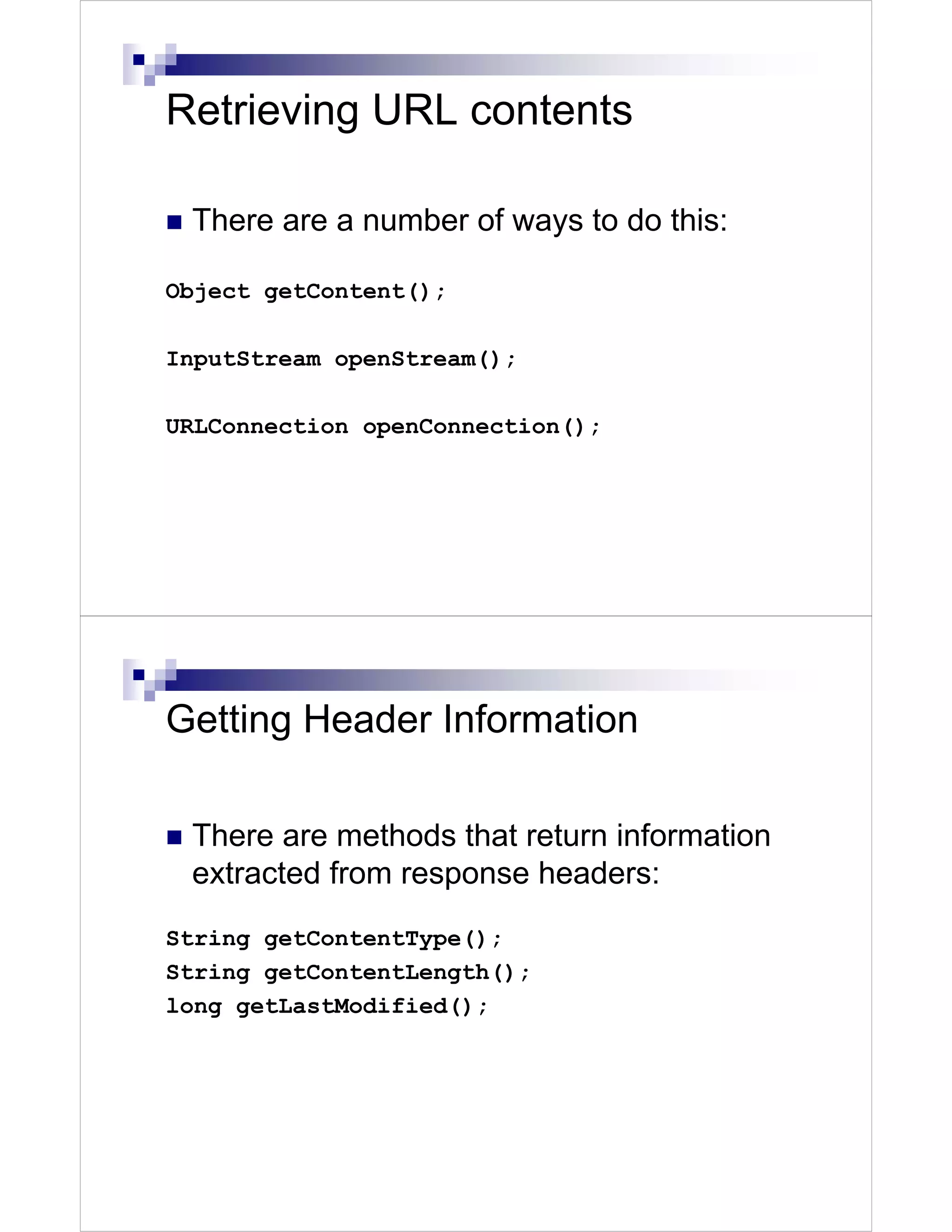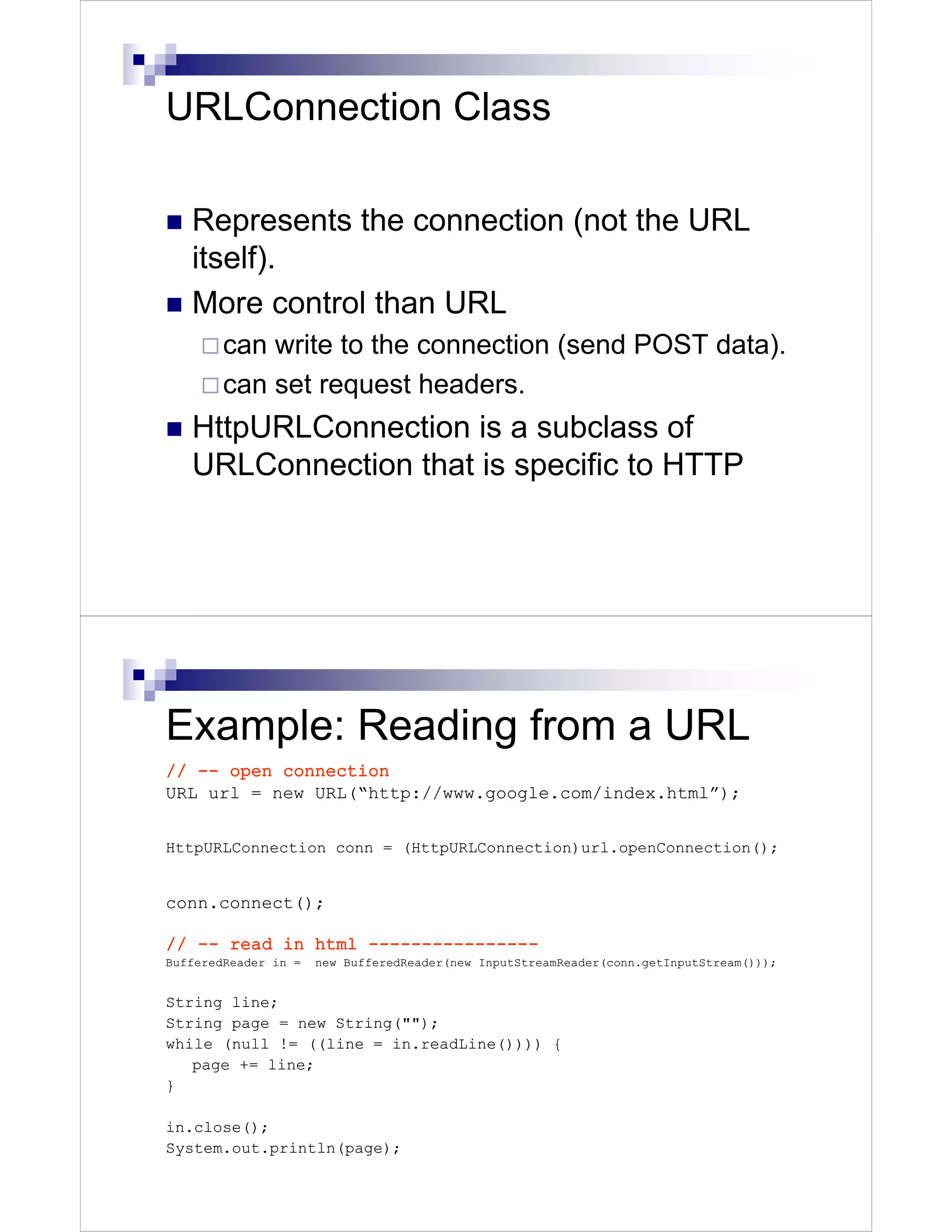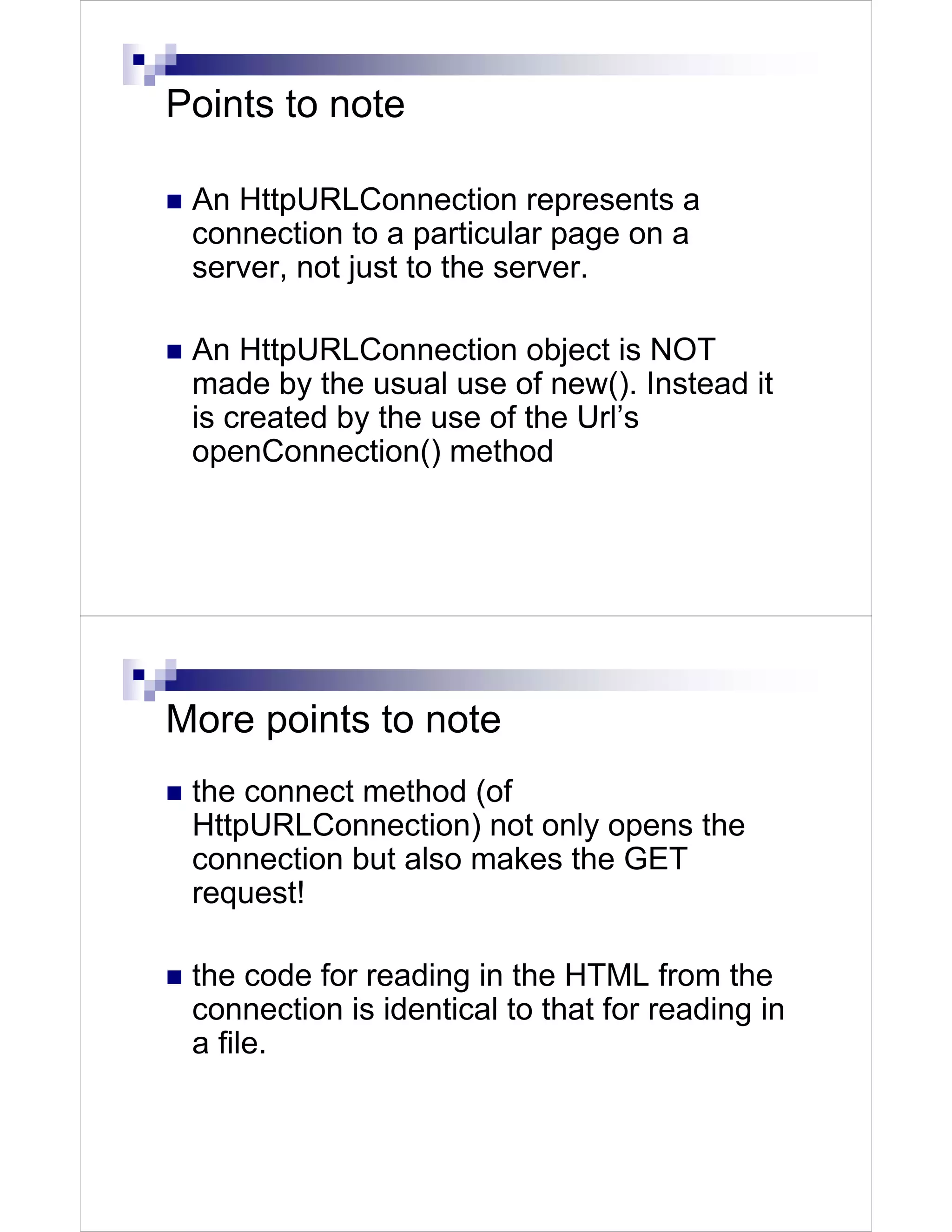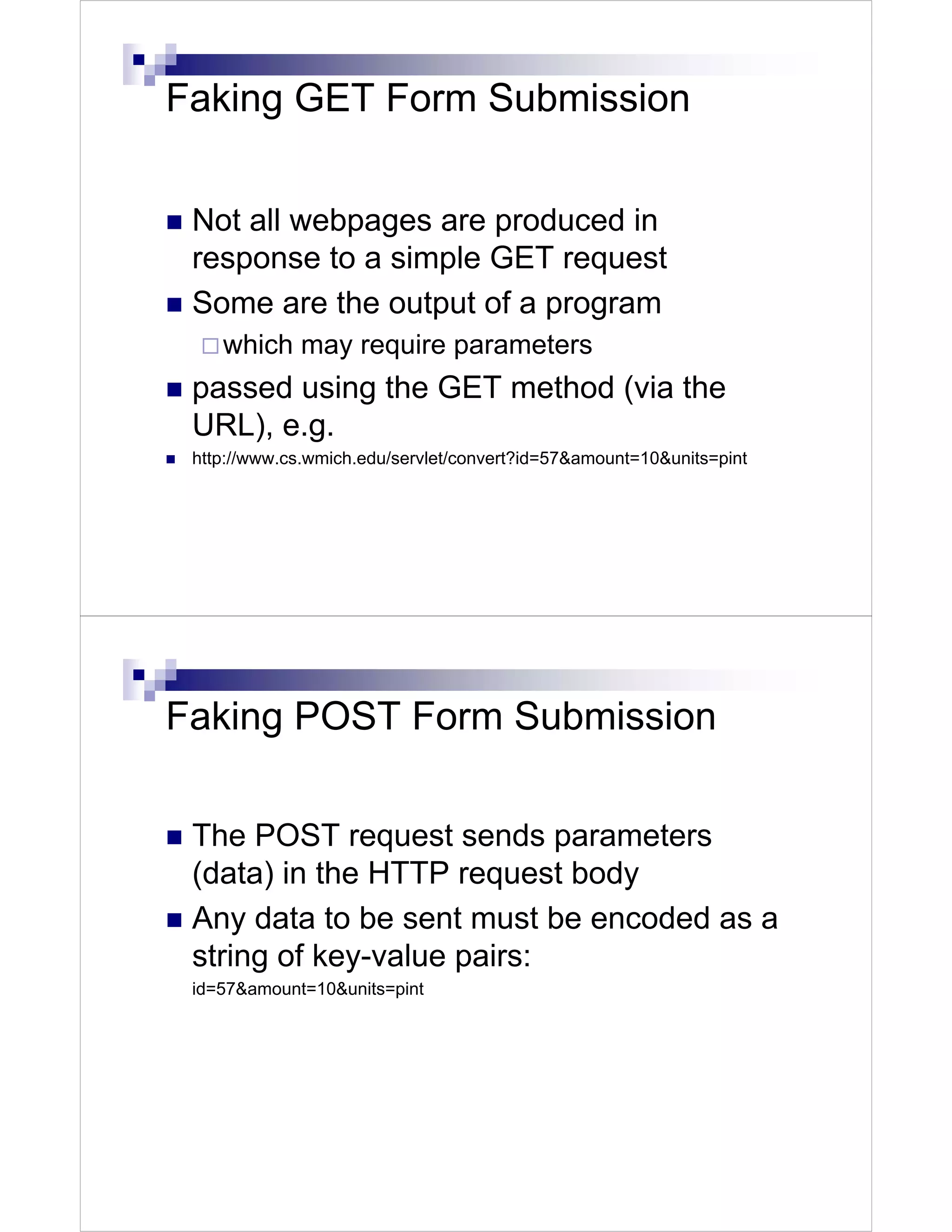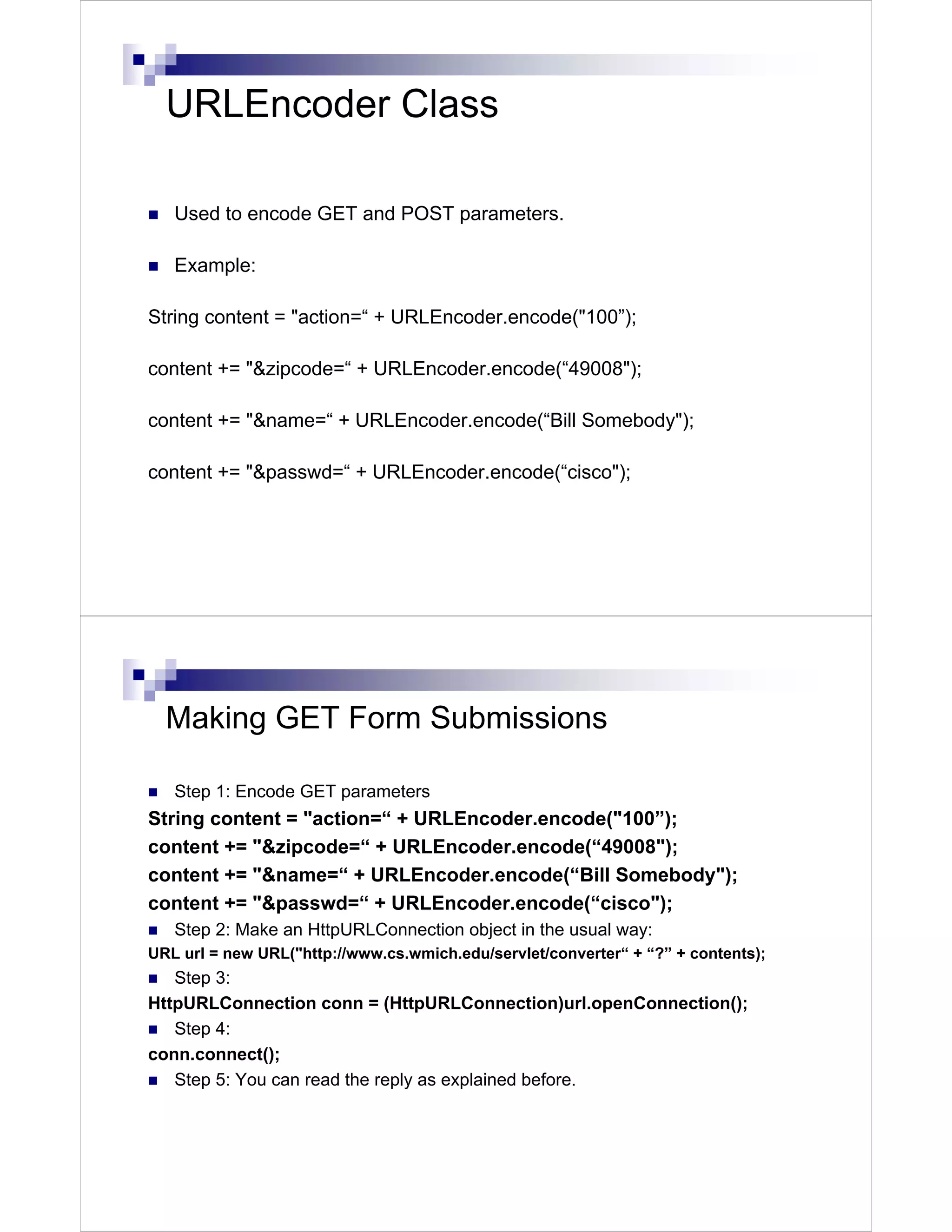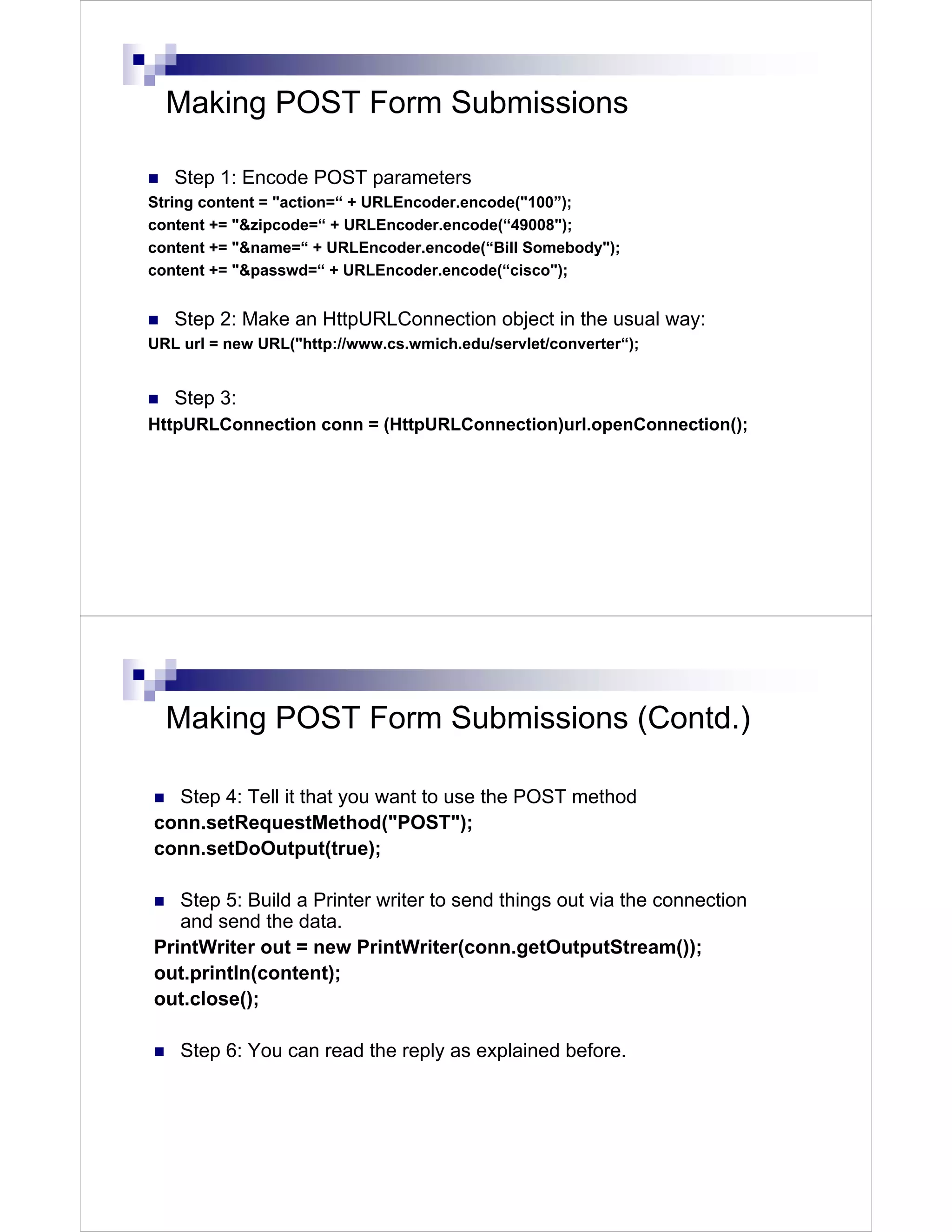The document discusses how to programmatically make URL requests in Java. It covers using the URL and URLConnection classes to (1) parse URLs, (2) retrieve URL contents by opening connections or streams, and (3) get header information. It also provides examples of how to fake GET and POST form submissions by encoding parameters and sending requests via URLConnection.
